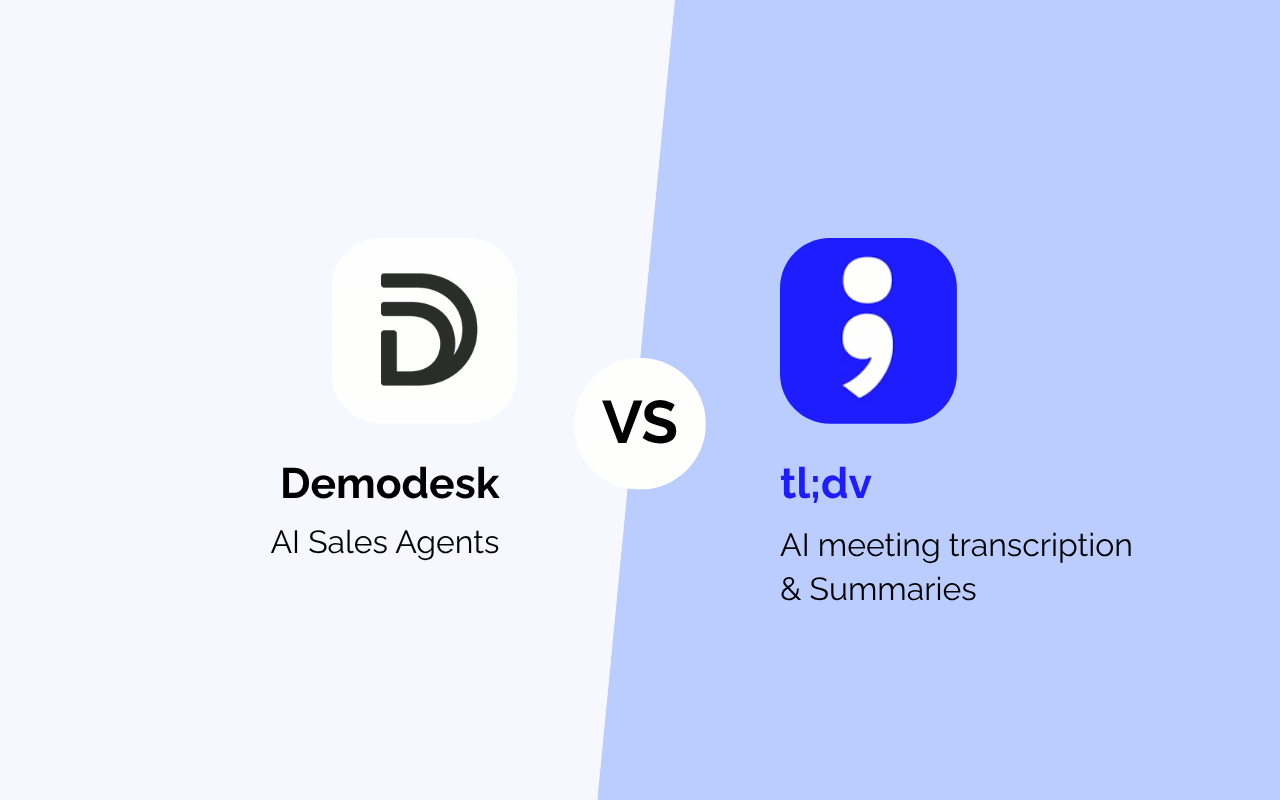A Key Performance Indicator, or KPI, is a metric or form of measurement used to track performance against set quotas. Establishing sales KPIs is an imperative function for leaders because it provides insight into a team’s progression towards achieving their quotas through numerous styles of quantitative data.
Incorporating a system for setting and tracking sales KPIs can increase productivity, enhance performance, and identify any challenge areas for your team. This article will discuss how to define your KPIs and the most common types for different sales teams and individual reps.
Defining Your Sales KPIs
Choosing your sales KPIs has to be a selective and purposeful process. If you adopt the wrong KPIs for your team —or even too many — then the data will be ultimately ineffective.
Here are some steps for defining your specific sales KPIs:
Determine your main objectives
- What are the main goals for your company?
- Is it to increase overall revenue or to gain a certain number of new customers over the next year?
- Perhaps you’re focused on increasing the lifecycle length of your current customers.
Wherever your concentration lies, be sure to narrow in on the main goal and set your KPIs accordingly.
Decide which type of sales KPIs to set
Aside from objectives, your sales KPIs need to be based on factors like the industry type, the characteristics of your product, and specific job position.
For example, you wouldn’t set the same KPIs for an Account Executive and a Sales Enablement Specialist since their progress is measured differently. So be purposeful in the selection of your KPIs for your team members.
Get clear on how to utilize sales KPIs
Ask yourself the following questions when establishing your KPIs and how they relate to your sales goals:
- How will you be using the KPIs to help reach your goals? Once you receive the KPI data, how will you use the information to improve performance or provide feedback?
- How often will you be tracking these KPIs? Are you tracking progress weekly, monthly, quarterly? Determine the timing when creating your KPIs and communicate with your reps.
- What additional information can you collect to ensure your KPIs are accurate tools of measurement? Use the company’s specific historical sales data and projected growth to provide achievable KPIs for your reps.
Don’t forget to include market information for more reference— this way you can incorporate the potential demand for your product into the expectations for your reps.
Main KPIs for Sales
When determining which sales KPIs to implement for your specific product and team, it’s important to understand the differences between the most common types. Here are some of the main KPIs for sales teams:

Pipeline KPIs
Pipeline KPIs track the progress of sales through the pipeline and can be adapted for both team and individual performance measurements. These include styles like:
- Lead to Customer Conversion Ratio
This ratio assists in tracking the lead generation and qualification progress of
your reps. It also gives you better insight into why certain opportunities may not be closed successfully.
- Sales Cycle Length
Tracking the average length of your team’s (or individual’s) sales cycle can help
determine if your current structure is effective or if it’s leading to factors like high churn rates or customer dissatisfaction.
- Total Number of Opportunities
Use this KPI to measure the overall number of opportunities in the pipeline. This helps track the progress of multiple sales teams — is your outreach team struggling to create enough opportunities to generate sales? Is your enablement team not compiling effective collateral material?
- Pipeline Value
This KPI helps determine the quality of opportunities versus simply the quantity in your pipeline at any given time. Knowing this information is an effective way to acknowledge gaps in your prospecting methods.
- Marketing to Sales Qualified Lead Ratio
This particular KPI tracks the success rate from a prospect’s engagement with content to a qualified lead for your sales rep. This ratio is a helpful tool for determining the effectiveness of your marketing materials.
Revenue KPIs
Revenue-based performance metrics are more straightforward measurements — these are typically based on the amount of money that is brought into the company through closed sales. These include:
- Total Revenue
This can be broken down by territory or region, as well as per product (depending on your business model).
- Overall Sales Growth
Generally, this is measured by a percentage and can be tracked monthly, quarterly, or and year-over-year. Additionally, this KPI can be measured individually or by the team.
- Overall Sales Volume
This KPI is helpful if you have products in multiple products or locations. Using this measurement, you can determine where the company is seeing sales growth — or challenges — in a specific area.
- Upsell Volume
Customer retention and upselling can be a large portion of sales for a company, depending on your product. By measuring the upselling, or cross-selling, the success of your sales team, you can hone in on where this method may be the most effective for future growth.
Activity KPIs
Sales activity KPIs are mainly used for measuring actions and productivity throughout the entirety of the sales cycle, from initial outreach to post-sales. These include:
- Outreach
These KPIs include the number of calls, emails, and follow-up meetings booked within a certain period of time. Sales collateral usage to conversion rate is another form of KPI measurement.
- Sales Cycle Activity
This includes sales actions like the number of demos booked and proposals sent, as well as prospect/client engagement with sales content.
- Post-Sales Client Relations
These KPIs are factors like the average response time, Net Promoter Scores (NPS), and overall customer satisfaction and retention.
KPIs for Specific Sales Reps
Similar to coaching, the sales KPIs that you set for your team need to reflect their specific responsibilities and expectations. Here are some examples of sales KPIs broken down by different types of teams:
Sales Development Reps (SDRs)
Best Types of Sales KPIs:
- Activity
- Pipeline
Since your SDRs are focused on quality leads and outreach numbers, you can track their performance through indicators like SQL (Sales Qualified Lead) conversion ratios and several value opportunities in the pipeline.
Sales KPI Example:
You set your SDR’s lead to opportunity ratio goal at 60%. When measuring their performance, you see that out of 200 leads, they have created 90 opportunities. This means they currently have a 45% lead to opportunity ratio, so they are 75% to their set goal ratio.
Account Executives (AEs)
Best Types of Sales KPIs:
- Pipeline
- Revenue
Account Executives usually have revenue-based quotas. So, KPIs like monthly sales growth or the number of deals that AE wins each month is a great way to measure progress towards those goals.
Sales KPI Example:
You set your AE’s Q1 lead to close ratio at 25%. When measuring their KPIs during the quarter, you see that out of 75 leads given, they have closed 15 sales. This means their lead to close ratio is currently at 20% – which brings them to 80% of their set goal ratio.
Post-Sales Account Managers
Best Types of Sales KPIs:
- Activity
- Client Feedback
Post-sales Account Managers are responsible for the retention and satisfaction of the clients — an important aspect of your organization. In fact, it’s been shown that profits can increase by 25% to 95% by increasing customer retention rates by just 5%.
A helpful tool for measuring their success is through Net Promoter Scores (NPS) and other customer-driven feedback data. In addition, activity KPIs like average response time for inbound emails gives insight into workflow efficiency and customer satisfaction.
Sales KPI Example:
You set your AM’s yearly retention rate at 75%. The retention rate calculation is as follows: (Number of customers at the end of the period - Number of new customers at the end of period) / Number of customers at the beginning of the period.
When the renewal period ends, you see that the AM has 180 current clients. They started the period with 200 clients but also brought on 50 new clients over the year. This means that this AM’s retention rate is 65% — about 87% towards the original goal.
Sales Enablement Specialists
Best Types of Sales KPIs:
- Pipeline
- Client feedback
Sales Enablement Specialists have the unique responsibility that involves all other sales teams as well as customer engagement. Measuring their progress can include KPIs like a sales rep’s content usage and a Marketing Qualified Leads (MQL) to customer ratio.
In addition, data like the average length of a customer’s life cycle, or their life cycle value, is another helpful KPI for tracking their performance.
Sales KPI Example:
Let’s say your Sales Enablement Specialists work with your marketing team to own the customer-facing blog on your website. You set their website traffic to lead ratio at 5% for Q1.
In the first half of the quarter, your website traffic reaches 500,000, and out of those visits, you gain 10,000 new leads. This is a traffic to lead ratio of 2%, which means your team is 40% towards their Q1 goal.
Sales Leaders
Best Types of Sales KPIs:
- All styles
As the sales leader and coach, you also need to incorporate KPIs into your self-assessment process— it’s important to thoroughly understand the health of your individual reps and the entire team.
Using KPIs like overall team target attainment, sales growth over a certain period of time, and average customer acquisition cost will give you deeper insights into whether your team is consistently and effectively progressing towards their sales goals. Tracking their performance will also inform the effectiveness of your coaching, training, and onboarding systems.
Sales KPI Example:
Let’s say your goal is to see a sales growth of 10% year over year. The formula is as follows to calculate sales growth in percentages: (Current revenue - Past revenue) / Past revenue.
Last year’s revenue total was $750,000 and this year’s current revenue is at $815,000. This is a growth of 8.6%, meaning you are 86% towards your goal.
How to Track Sales KPIs
Similarly to tracking your goals and forecasts, you want to track your KPIs consistently and accurately. Utilize software and automation to keep you informed on how your team is moving towards their individual and group quotas.

KPI tracking software with interactive dashboards and real-time reports will help give you direct insights into each prospect and client's status and give you a thorough understanding of what is working for your team and what may need improvement.
As always, automation and data can only give you so much information — it’s equally as important to maintain open communication with your team through coaching feedback, training, and even mentoring. This creates space for understanding the nuance and context within your sales process that percentages or ratios cannot measure.
Clive Keyte, the Managing Director of the strategic consulting company Intrafocus, sums up the proper approach to KPIs.
“If sales managers are doing their jobs properly, the first thing they should do is look at what the company is trying to achieve, translate that into a set of four or five sales objectives, and then measure the success of the objectives by selecting the right KPIs.”
Use sales KPIs in unison with your goals and overall company objectives to create a foundation for long-term and continued sales success.





%201.avif)







